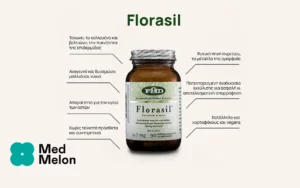Scientific Names of East Indian Valerian Root:
Valeriana jatamansi Jones (syn. V. wallichii DC) [Fam. Valerianaceae]
Forms:
East Indian valerian root, cut and dried; East Indian valerian root tea; East Indian valerian root tincture; East Indian valerian standardized extracts.
Traditional Usage:
– Analgesic
– Anti-inflammatory
– Antioxidant
– Antispasmodic
– Antiviral
– Anxiety
– Bone and Joint Pain
– Carminative
– Colic
– Cramps
– Digestive Disorders
– Eczema (stress related)
– Excitability
– Hypochondria
– Hysterical States
– Insomnia
– Menstrual Disorders
– Migraine
– Muscle Relaxant
– Nervous Conditions
– Skin Disorders (stress related)
– Sleep Disorders
Overview:
East Indian valerian root and rhizome, Valeriana jatamansi Jones (syn. V. wallichii DC) [Fam. Valerianaceae], has been used therapeutically in Indian Ayurvedic, Tibetan Buddhist and traditional Chinese schools of medicine for many centuries. East Indian valerian is used similarly to European valerian, V. officinalis and other related species. Valerian is recommended for treating restlessness and sleep disorders based on nervous conditions. East Indian valerian is also recommended as an analgesic and against rotavirus, based on scientific studies. Even just the fragrance of valerian root, based on studies, has a powerful calming and profoundly relaxing effect and can alleviate stress-related skin problems. Over 200 scientific studies have been done on the active ingredients of valerian underground parts. Valerian’s main therapeutic indication is as a natural ‘drug’ for treating insomnia. The root tea and its extract have been proven to: 1) shorten the time it takes to fall asleep, 2) reduce the amount of waking time after sleep onset, 3) prolong the overall time spent asleep, 4) increase the length of deep sleep, 5) increase dreaming and 6) significantly improve the quality of sleep in both normal and insomniac sleepers. Based on numerous human, double-blind, placebo controlled clinical trials, valerian, or ‘God’s Valium’, can alleviate stress, relax muscles, calm frayed nerves and reduce anxiety – often as well as the commonly used synthetic drugs do – without observed side-effects or morning grogginess when taken at the recommended dosages. Valerian is listed as a sleep aid in over sixteen different pharmacopoeias of the world and is also said to stimulate appetite. East Indian valerian also relieves pain. One clear benefit of valerian over synthetic pharmaceutical drugs is that they do not interact with alcohol or augment alcohol’s negative effects when taken at recommended dosages. Based on clinical trials, valerian root doesn’t reduce concentration.
Active Ingredients:
East Indian valerian roots and rhizomes contain the same active ingredients as European valerian root, and several scientific studies have been published on the active ingredients including valepotriates and the flavonoid, linarin-isovalerianate. Valeriana officinalis contains: Approximately 0.5-2% volatile oils; 0.4-1.4% monoterpenes including alpha and beta-pinene; camphene; borneol, eugenol, isoeugenol; sesquiterpenes including beta-bisabolene, caryophyllene, valerianol, valerenic acid, valeranone, pacifigorgiol; patchouli alcohol, valerenol, valerenyl esters, valerenal, valerenic acid with acetoxy and hydroxy derivatives; caffeic acid; gamma-aminobutyric acid (GABA); chlorogenic acid; beta-sitosterol; methyl 2-pyrrolketone; choline; tannins; gum; resin. [References include: Becker H, Chavadej S. 1985. Valepotriate production of normal and colchicine-treated cell suspension cultures of Valeriana wallichii. J Nat Prod. 1985 Jan-Feb; 48(1): 17-21; Becker H, Schrall R, Hartmann W. 1977. [Callus cultures of a Valerian species. 1. Installation of a callus culture of Valeriana wallichii DC and 1st analytical studies]. Arch Pharm (Weinheim). 1977 Jun; 310(6): 481-4. German; Holzl J. 1973. [Preparation of 14C-administrated valepotriates with Valeriana wallichii (author’s transl)]. Planta Med. 1973 Aug; 24(1): 66-72. German; Thies PW. 1968. [Linarin-isovalerianate, a currently unknown flavonoid from Valeriana wallichii D.C. 6. Report on the active substances of Valeriana]. Planta Med. 1968 Dec; 16(4): 363-71. German].
Suggested Amount:
Valerian dosages range from 2 to 3 grams of drug (root or underground parts) taken once to several times per day and can be taken as infusions, extracts, fluidextracts and tinctures. For use as a sleeping pill, standardized extracts are recommended at 300 to 500mg about an hour before bedtime and half of that dose for treating anxiety during the day. A recent study also found valerian effective as a bath treatment for generalized fibromyalgia.
Drug Interactions:
None known.
Contraindications:
East Indian valerian is contraindicated during pregnancy; Valeriana jatamansi Jones (syn. V. wallichii DC) is reputed to be an abortifacient and to affect the menstrual cycle.
Side Effects:
Based on clinical trials, European valerian root extracts can be safely utilized during the day to combat anxiety and nervous conditions without reducing concentration, effecting reaction time or diminishing driving performance scores in a car. However, such studies have not been carried out with East Indian valerian, so these qualities can not be assumed for East Indian valerian being taken in therapeutic dosages.
References:
Chen SD, Xie XL, Du BN, Su QH, Wei QD, Wang YQ, Li HL, Wang ZG, Wang YH, Cheng SJ, et al. 1984. Infantile rotavirus enteritis treated with herbal Valeriana jatamansi (VJ). J Tradit Chin Med. 1984 Dec; 4(4): 297-300.
Diamond, S. and G.H.N. Towers 2000. Valerian, Saw Palmetto and Goldenseal.
In: Mazza, G. and D.B. Oomah, eds. 1999. Herbs, Botanicals and Teas as Functional Foods and Nutraceuticals. Techomic Publishing Inc., Lancaster, PA, USA.
Hosoi J, Tanida M, Tsuchiya T. 2001. Mitigation of stress-induced suppression of contact hypersensitivity by odorant inhalation. Br J Dermatol. 2001 Nov; 145(5): 716-719.
Newall CA, Anderson LA, and Phillipson JD. 1996. Valerian in Herbal Medicines. A Guide for Health Care Professionals. The Pharmaceutical Press, London, pp. 260-262.
Shrivastava SC, Sisodia CS. 1970. Analgesic studies on Vitex negundo and Valeriana wallichii. Indian Vet J. 1970 Feb; 47(2): 170-5.




